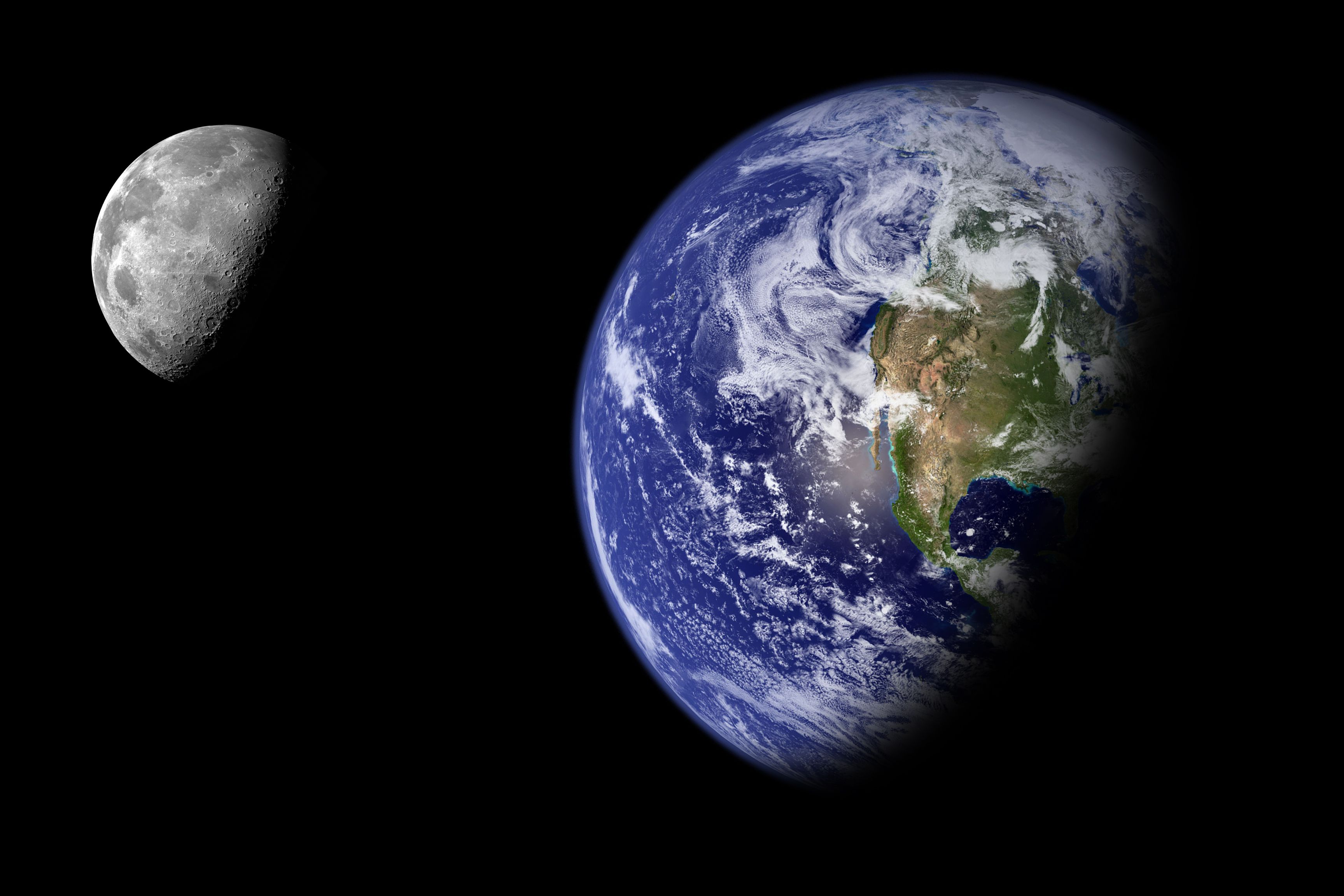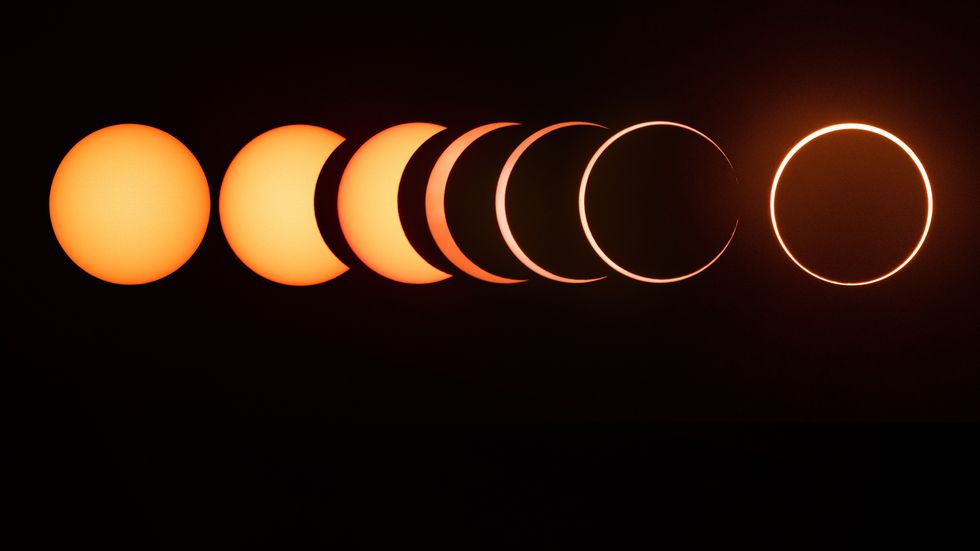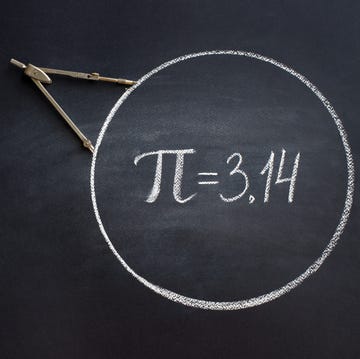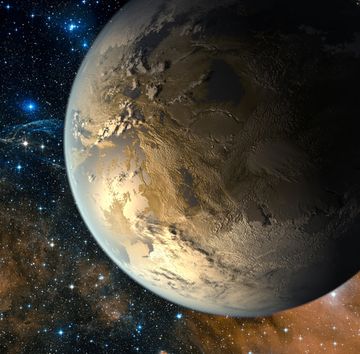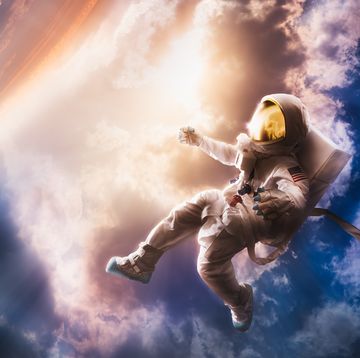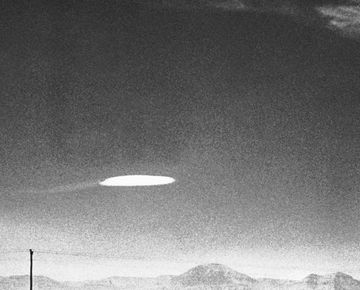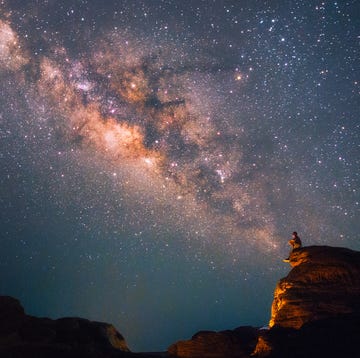The moon is Earth’s only friend. And yet—despite a relationship stretching back billions of years—the gap between us only grows wider. Someday, far in the future, we will be left alone. What happens to Earth as the moon recedes is not going to be pretty.
As friendship origin stories go, the Earth-moon system is a great one. Four and a half billion years ago, when the solar system had just formed, it was a chaotic place. The young Earth was still molten, and it was surrounded by dozens of smaller almost-planets. One such object, roughly the size of Mars, crashed into the Earth. That collision vaporized a good chunk of our planet’s mass, sending it into orbit. Most of it rained back down, but some stayed up, eventually coalescing and cooling to become our moon.
The moon really is unique. Among the rocky planets, we have by far the largest satellite; Mars only has a couple of dinky stolen asteroids, and Mercury and Venus have nothing. Within the entire solar system, we have proportionally the largest moon of them all, roughly 10 percent of the mass of the Earth.
Something’s Not Quite Right Here
We’ve had a good run, but it’s not going to last forever. The first person to notice that something was off was Edmund Halley, of Halley’s Comet fame. Living at the turn of the eighteenth century, Halley was a huge fan of the work of his good buddy, Isaac Newton. Using Newton’s newfound laws of motion and gravity, Halley found all sorts of interesting applications, including predicting the future paths of comets and the appearance of a total solar eclipse in 1715 – the first time in history anyone had ever accurately predicted such an event.
And it was in ancient records of past eclipses that Halley noticed something odd. Going all the way back thousands of years to Sumerian accounts of eclipses, Halley found that the time between eclipses didn’t make sense if the moon had always stayed in its present orbit. The only way to reconcile Newton’s gravity with the ancient records was to hypothesize that the moon was slowly drifting away from us.
And it is, although Halley didn’t live long enough to see his prediction verified. That would come only during the Apollo missions, where the astronauts placed mirrors on the surface of the moon. This allowed scientists back on Earth to bounce lasers off those mirrors and measure, in real time, the rate at which the moon is receding away from us. That number, roughly 3.8 centimeters per year, seems agonizingly slow. But multiplying that number over billions of years means that the moon is not going to hang around for long, astronomically speaking.
Tides Will Diminish and The Days Will Lengthen
The problem is in the tides. The moon’s gravity always pulls on the Earth, raising the tides in its direction. But the Earth is also spinning, so it pulls those tides away. From the moon’s perspective, the Earth has an extra lump, which creates an extra gravitational pull. That pull from the tide tugs on the Moon like a leash on a reluctant dog, adding energy to the moon’s orbit and causing it to drift away. Since that energy has to come from somewhere, Earth’s rotation slowly spins down in response.
The good news is that this process is very slow and will take an incredibly long time to complete. The bad news is that the negative effects are already underway.
As we lose the moon, we’ll lose the tides. Not all of them; roughly half of the tides are due to the gravitational influence of the Sun, which isn’t going anywhere anytime soon. But many aquatic and semi-aquatic creatures rely on the regularity and predictability of the tides going in and out. They’ll have to adapt to the changing reality (in the coming millions of years).
We’ll Lose Our Natural Impact Shield
If you’ve ever looked up at the moon and enjoyed the views of its craters, then you know the important job it serves as the Earth’s trusty bodyguard. The moon’s own gravity captures many inbound asteroids and comets, as destructive objects that were headed towards the Earth strike the moon instead. Every cratered scar on the moon’s face represents one less devastating strike on the Earth—just ask the dinosaurs how well life fares when a large space rock hits. The moon’s ability to protect us diminishes with every passing year, and the next time a Big One heads to the inner solar system, the moon may be too far away to absorb the impact. If humanity still inhabits the Earth, they’ll have to figure out their own defense strategy.
No More Picture-Perfect Eclipses
On a less critical, but nevertheless important, note, we’re going to lose our total solar eclipses. Humanity just happened to rise into intelligence at a peculiar time in the evolution of our solar system. The Sun slowly increases in size and brightness as it ages, and the moon steadily gets further away as time goes on. Right now, by sheer cosmic coincidence, the Sun is roughly four hundred times further away from the Earth than the moon is, but it’s also four hundred times larger than the moon, meaning the two have almost exactly the same apparent size in our sky. This allows for total solar eclipses.
In just a few hundred million years, the moon will be too far away, its apparent size too small, to allow for totality. This won’t affect life or civilization on our planet, but it will be a huge bummer.
We Could Have a Future Climate Disaster
There is one last effect that the moon has on our planet, and as it drifts away, we will sorely miss this one in particular: the moon’s ability to stabilize our climate.
The Earth’s axis is tilted by 23.4 degrees, relative to its orbit around the Sun. This tilt is what makes each year so interesting as we march through the seasons, with each hemisphere spending half the year pointed towards the Sun and receiving an extra dose of daylight.
The tilt of our planet has remained remarkably stable over billions of years—which is unheard of in the solar system. The other planets have all sorts of random tilts (for example, Venus turns backwards, and Uranus is flipped on its side), but these tilts change all the time. The changing tilts are caused by complex gravitational interactions among all the planets with each other. The effect is very small, but when you have hundreds of millions of years to play with, even small things can grow to become big deals. And so as the ages pass, the planets constantly reorient themselves.
But not the Earth. The moon’s great mass provides a natural counterweight against all the various gravitational machinations of the other planets. Our axial tilt has remained remarkably stable over the eons, allowing life to evolve with a predictable set of seasons. Sure, the climate changes here and there, but winter is always winter and summer is always summer. That regularity allows life to adapt and explore a variety of interesting niches, including the special set of adaptations that allowed intelligence to arise in the first place.
Without the moon, we may not be here. But as the moon drifts away, it will lose its ability to steady our tilt, subjecting our planet to the whims of the other planets. Far, far into the future, the concept of regular seasons will be nothing more than a historical footnote.
And in that distant future, billions of years from now, the Moon will meet its own ultimate fate. It’s impossible to predict what will happen to our long-gone companion. In about 4 billion years our Sun will end its life, turning into a red giant before ejecting most of its material. Those transformations will ravage the inner solar system, roasting the Earth. In that scenario, our Moon will be consumed by the enraged giant Sun. But that epoch will also introduce gravitational instabilities, which could cause our Moon to be ejected from the solar system altogether. Once free, it will wander the depths of interstellar space for eons to come.
So go out today and look for the moon. It may be far away already, but we’ll truly miss it when it’s gone.
Paul M. Sutter is a science educator and a theoretical cosmologist at the Institute for Advanced Computational Science at Stony Brook University and the author of How to Die in Space: A Journey Through Dangerous Astrophysical Phenomena and Your Place in the Universe: Understanding Our Big, Messy Existence. Sutter is also the host of various science programs, and he’s on social media. Check out his Ask a Spaceman podcast and his YouTube page.
